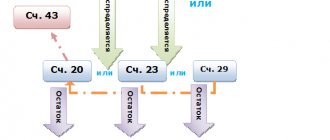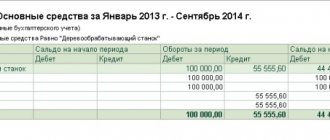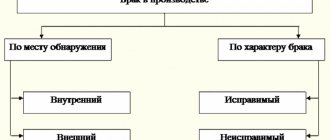Account 26 in accounting
Determination of general business expenses
General business expenses include all costs for administrative needs that are not directly related to production, provision of services or performance of work, but relate to the main type of activity.
The list of general business expenses depends on the profile of the organization and is not closed, according to the recommendations for using the chart of accounts.
The main general operating costs can be identified:
- Administrative and management expenses
- Business trips;
- Salaries of administration, accounting, management personnel, marketing, etc.;
- Entertainment expenses;
- Security, communication services;
- Consultations of third-party specialists (IT, auditors, etc.);
- Postal services and office.
- Repair and depreciation of non-production fixed assets;
- Rent of non-industrial premises;
- Budget payments (taxes, fines, penalties);
- Other:
Organizations not related to production (dealers, agents, etc.) collect all costs on account 26 and subsequently write them off to the sales account (account 90).
Important! Trade organizations may not use account 26, but assign all expenses to account 44 “Sales expenses”.
Main properties of account 26
Let's consider the main properties of account 26 “General business expenses”:
- Refers to active accounts, therefore, it cannot have a negative result (credit balance);
- It is a transaction account and does not appear on the balance sheet. At the end of each reporting period it must be closed (there should be no balance at the end of the month);
- Analytical accounting is carried out according to cost items (budget items), place of origin (divisions) and other characteristics.
Typical wiring
Account 26 “General business expenses” corresponds with the following accounts:
Table 1. By debit of account 26:
| Dt | CT | Wiring Description |
| 26 | 02 | Depreciation calculation for non-production fixed assets |
| 26 | 05 | Depreciation calculation for non-production intangible assets |
| 26 | 10 | Write-off of materials, inventory, workwear for general business needs |
| 26 | 16 | Variance in the cost of written-off general business materials |
| 26 | 21 | Write-off of semi-finished products for general business purposes |
| 26 | 20 | Attribution of costs (work, services) of the main production to general economic needs |
| 26 | 23 | Attribution of costs (work, services) of auxiliary production to general economic needs |
| 26 | 29 | Attribution of costs (work, services) of service production to general economic needs |
| 26 | 43 | Write-off of finished products for general business purposes (experiments, research, analyses) |
| 26 | 50 | Decommissioning of postage stamps |
| 26 | 55 | Payment of expenses (minor work, services) from special bank accounts |
| 26 | 60 | Payment for work and services of third parties for general business needs |
| 26 | 68 | Calculation of payments of taxes, fees, penalties |
| 26 | 69 | Deduction for social needs |
| 26 | 70 | Calculation of wages for administrative, managerial and general business personnel |
| 26 | 71 | Accrual of travel expenses, as well as accountable expenses for small general business needs |
| 26 | 76 | General expenses related to other creditors |
| 26 | 79 | General business expenses associated with the organization's divisions on a separate balance sheet |
| 26 | 94 | Write-off of shortages without perpetrators, except for natural disasters |
| 26 | 96 | Assigning general business expenses to the reserve for future expenses and payments |
| 26 | 97 | Write-off of a share of future expenses for general business expenses |
Table 2. For the credit of account 26:
| Dt | CT | Wiring Description |
| 08 | 26 | Attribution of general business expenses to capital construction |
| 10 | 26 | Capitalization of returnable waste and unused materials written off as general business expenses |
| Write-off of general business expenses when closing the month, that is, where account 26 is written off | ||
| 20 | 26 | For main production |
| 21 | 26 | For the production of semi-finished products |
| 29 | 26 | For service production |
| 90.02 | 26 | Performed work and services for third parties |
| 90.08 | 26 | On the cost of sales when using the direct costing method |
Closing 26 accounts
Closing account 26, that is, writing off all general business expenses, is performed in several ways:
- Included in the cost of production through production accounts if products are produced;
- Referred to as cost of sales when providing services or work;
- Referred to the current expenses of the reporting month using the direct costing method:
Important! The write-off method, as well as the basis for the distribution of general business expenses, must be fixed in the accounting policies of the organization.
Write-off as part of the cost of production
In this case, general business expenses are written off in shares, taking into account the distribution base, into production accounts and may remain on product cost accounts (for example, when producing products under account 43 “Finished Products”) or production accounts (for example, work in progress under account 20 “Main Production” ) at the end of the reporting period.
Main types of cost distribution bases:
- Revenue
- Product output volume
- Planned cost of production
- Material costs
- Direct costs
- Salary and so on
When closing the month, the following transactions are generated, for example:
| Dt | CT | Wiring Description |
| 20 | 26 | General business expenses for main production were written off |
| 23 | 26 | General business expenses for auxiliary production were written off |
General business expenses are distributed to the cost of production (production accounts) according to the specified distribution and analytical accounting base:
Therefore, general business expenses are written off:
- In full - if one product is produced (no analytics);
- Distributed across all types of products in proportion to the selected base - if several types of products are produced and calculated in the context of analytics.
Example
LLC "Horns and Hooves" produces hats and shoes, the production of which is carried out at a planned cost. In an organization, direct expenses are reflected in account 20 “Main production”, and indirect expenses in account 26 “General business expenses”.
The accounting policy states:
- General business expenses are written off against the cost of production.
- The distribution base is material costs.
In November 2021, direct expenses amounted to RUB 51,040.00:
- For headwear – RUB 28,020.00. of them:
- Material costs – RUB 15,000.00.
- For the production of shoes - RUB 23,020.00. of them:
- Material costs – RUB 10,000.00.
indirect costs – 18,020 rubles.
- 3/p administrative staff – RUB 10,000.00.
- Insurance premiums – RUB 3,020.00.
- Premises rental – RUB 5,000.00.
According to the distribution base for material costs:
Postings when closing account 26
| 30.11.2016 | 20 | 26 | 10 812 | Closing account 26 (headwear) |
| 30.11.2016 | 20 | 26 | 7 208 | Closing account 26 (shoes) |
Important! Also in the accounting policy, you can indicate non-distributable general business expenses, which will be written off immediately to current expenses in Account 90.08.
Write-off to cost of sales
If the accounting policy specifies the write-off method “to cost of sales,” then the following transactions are taken into account when closing the period:
| Dt | CT | Wiring Description |
| 90.02 | 26 | General business expenses are written off as the cost of services and work |
In this case, costs can also be taken into account in terms of analytics.
Write-off using direct costing method
If the accounting policy specifies the “direct costing” write-off method, then general business expenses are taken into account as semi-fixed and when closing the period they are reflected in the following entries:
| Dt | CT | Wiring Description |
| 90.08 | 26 | General business expenses are written off as cost of sales |
In this case, the amount of costs is written off in full in each reporting period.
What does debit 68 credit 68 mean?
In VAT accounting, there are situations when the amount of incoming VAT is greater than that accrued upon sale. This happens, for example, when a company purchased more raw materials than it sold products. Or a large OS was purchased. Or the company built a new workshop on its own. Another situation with compensation arises for companies involved in exports.
More information about the VAT refund mechanism itself can be found in the article “What is the procedure and features of the “input” VAT refund?”
If you receive a VAT refund at the end of the quarter, then the tax authorities can offset the amount of the refund against existing arrears, penalties, and fines not only for VAT, but also for other federal taxes - on the basis of clause 4 of Art. 176 of the Tax Code of the Russian Federation, wiring Dt 68 Kt 68.
If the taxpayer decides to receive a VAT refund to the current account, then when money is received from the budget, the accountant must make the following entry in the accounting:
Dt 51 Kt 68 - the amount of VAT to be refunded was returned to the current account.
Posting debit 68 to credit 68 means offsetting the overpayment (reimbursement) for one tax against the company's payments for other taxes.
Example
LLC "Sdoba" in the first quarter of 2021 acquired a production line for the production of confectionery products worth 5 million rubles, including VAT 762,711.86 rubles. In addition, during the quarter I bought raw materials, paid utilities and workshop rent - a total of 1 million rubles to be deducted for the first quarter of 2021. In the first quarter of 2021, I sold products worth RUB 2,360,000, including RUB 360,000. VAT. The difference between accrued VAT and input VAT was:
360,000 rub. – 1,000,000 rub. = –640,000 rub.
That is, a tax was generated for reimbursement from the budget. And for income tax in the first quarter of 2021, Sdoba LLC received a tax payable in the amount of 500 thousand rubles. The company submitted an application with a request to offset the budget debt in the form of a VAT refund against the payment of income tax for the first quarter of 2021. The tax authority agreed on the offset of taxes among themselves. Then, by posting between the subaccounts of account 68, the accountant can redistribute the overpayment of VAT towards the payment of income tax. The accountant of “Sdoba” will make the following entry:
Dt 68 subaccount “Income Tax” Kt 68 “Calculations for VAT” - for 500,000 rubles: VAT refundable for the first quarter of 2021 was credited against the payment of income tax.
The company still has 140 thousand rubles left. overpayment of VAT, which can be offset by posting Dt 68 Kt 68 against taxes in the second quarter of 2021.
In what other cases can a company make an accounting entry Dt 68 Kt 68? In case of offset of overpayment between any taxes for which the Tax Code of the Russian Federation allows offset. And also when overpaying one tax is offset against penalties, arrears or fines.
Example
discovered in April 2021 an overpayment of personal income tax transferred for employees in the amount of 11,235 rubles. And for income tax, an arrears of 7,000 rubles were revealed. The company submitted an application to the Federal Tax Service with a request to offset the arrears against the overpayment. The tax office allowed the offset. The accountant made the accounting entry Dt 68 Kt 68 as follows:
Dt 68 subaccount “Calculations for income tax” Kt 68 subaccount “Calculations for personal income tax” - in the amount of 7,000 rubles: overpayment for personal income tax is offset against arrears for income tax.
The company asked to offset the balance of the overpayment against the fine for incomplete payment of the tax amount; the tax authorities agreed on the offset. Then the posting of Dt 68 Kt 68 should be detailed with the following subaccount:
Dt 68 subaccount “Calculations for income tax” Kt 68 “Calculations for personal income tax” - in the amount of 4,235 rubles: overpayment of personal income tax is offset against the fine for incomplete payment of tax.
Posting Dt 68 Kt 68 is made in accounting in case of offset of the overpaid amount of tax against the debt to the budget for another tax. You can also offset the overpayment of taxes to the budget to pay off accrued budget fines and penalties by posting Dt 68 Kt 68 to the appropriate subaccounts.
More complete information on the topic can be found in ConsultantPlus. Full and free access to the system for 2 days.
Settlements with employees of the organization are not limited to wage payments. In the process of economic activity, the organization needs to make other payments to the employees of the enterprise. We’ll talk about how to calculate payments in favor of employees in this article.
Examples of using account 26 “General business expenses”
Let's look at the above wiring using examples.
Example 1. Closing an account for the cost of production at the planned cost, one type of product
LLC "Horns and Hooves" produces products, the production of which is carried out at a planned cost. In an organization, direct expenses are reflected in account 20 “Main production”, and indirect expenses in account 26 “General business expenses”.
The accounting policy states:
- General business expenses are written off against the cost of production.
- The distribution base is the planned cost.
In November 2021, direct expenses amounted to RUB 88,040:
- 3/p production employees – RUB 20,000.00.
- Insurance premiums – RUB 6,040.00.
- Material costs – RUB 62,000.00.
Indirect costs – RUB 13,020:
- 3/p administrative personnel – RUB 10,000.00;
- Insurance premiums – RUB 3,020.00:
| date | Account Dt | Kt account | Amount, rub. | Wiring Description | A document base |
| Output | |||||
| 16.11.2016 | 43 | 40 | 85 000 | Release of finished products (at planned cost) | Production report, invoice on acceptance of products to the warehouse |
| 16.11.2016 | 20 | 10 | 62 000 | Write-off of materials | Request-invoice |
| Payroll for production workers | |||||
| 30.11.2016 | 20 | 70 | 20 000 | Salary accrued | Time sheet, payslip |
| 30.11.2016 | 70 | 68 | 2 600 | Personal income tax withheld | |
| 30.11.2016 | 20 | 69 | 6 040 | Insurance premiums accrued | |
| Payroll for administrative and management personnel | |||||
| 30.11.2016 | 26 | 70 | 10 000 | Salary accrued | Time sheet, payslip |
| 30.11.2016 | 70 | 68 | 1 300 | Personal income tax withheld | |
| 30.11.2016 | 26 | 69 | 3 020 | Insurance premiums accrued | |
| Closing the month | |||||
| 30.11.2016 | 20 | 26 | 10 000 | Closing account 26 (salaries) | |
| 30.11.2016 | 20 | 26 | 3 020 | Closing account 26 (insurance premiums) | |
| 30.11.2016 | 40 | 20 | 101 060 | Write-off of the actual cost of production (26,040.00 (Labour) + 62,000.00 (Material costs) + 13,020.00 (General expenses)) | |
| 30.11.2016 | 43 | 40 | 16 060 | Adjustment of product cost to actual value | |
Important! If PBU is used, and general business expenses are taken into account in tax accounting as indirect expenses (established in the accounting policy), then temporary differences (TD) also arise:
| VR/NU | Account Dt | Kt account | Amount, rub. | Wiring Description |
| VR | 20 | 26 | 10 000 | Closing account 26 (salaries) |
| WELL | 90.08 | 26 | 10 000 | |
| VR | 90.08 | 26 | -10 000 | |
| VR | 20 | 26 | 3 020 | Closing account 26 (insurance premiums) |
| WELL | 90.08 | 26 | 3 020 | |
| VR | 90.08 | 26 | -3 020 | |
| WELL | 40 | 20 | 88 040 | Write-off of the actual cost of production |
| VR | 40 | 20 | 13 020 | |
| WELL | 43 | 40 | 3 040 | Adjustment of product cost to actual value |
| VR | 43 | 40 | 13 020 |
Example 2. Closing an account for the cost of sales when providing services
Horns and Hooves LLC provides security services. General business expenses are written off immediately to the cost of security services.
In November 2021, general business expenses amounted to RUB 23,020.
- 3/p personnel – RUB 10,000.00;
- Insurance premiums – RUB 3,020.00;
- Premises rental – RUB 10,000.00:
| date | Account Dt | Kt account | Amount, rub. | Wiring Description | A document base |
| 24.11.2016 | 26 | 60 | 10 000 | Rent accrued | The act of providing services |
| 26.11.2016 | 62 | 90.01 | 30 000 | Revenue accounting | The act of providing services |
| 90.03 | 68 | 5 400 | VAT charged | ||
| 30.11.2016 | 26 | 70 | 10 000 | Salary accrued | Time sheet, payslip |
| 30.11.2016 | 70 | 68 | 1 300 | Personal income tax withheld | |
| 30.11.2016 | 26 | 69 | 3 020 | Insurance premiums accrued | |
| Closing the month | |||||
| 30.11.2016 | 90.02 | 26 | 23 020 | Write-off of general business expenses to cost of sales posting | |
Postings for deductions from wages: Dt 70 Kt 76 (73, 68)
- The responsibility of the employer, who is an intermediary (tax agent) between the Federal Tax Service and the recipient of income (employee), is to calculate and withhold personal income tax. In this case, the entry is made: Dt 70 Kt 68.
For more information about the nuances of calculating personal income tax, see the article “Calculation of personal income tax (personal income tax): procedure and formula.”
- If a loan agreement has been entered into between the employee and the company, monthly interest and principal amounts may be deducted from his paycheck. The basis is a written statement from the employee. The accounting entry in this case will be as follows: Debit 70 Credit 73.
- Deductions for compensation for shortages of goods and materials or damage caused are reflected similarly: Dt 70 Kt 73.
- In addition, the employer is obliged to make deductions from the salary accrued to the employee according to executive documents. These may be court orders or bailiff orders, notarized agreements on the withholding of alimony, etc. Such transactions are reflected by the posting: Dt 70 Kt 76.
Tags: certificate of completion, asset, balance sheet, accountant, water supply, capital, loan, tax, expense, write-off, formula







